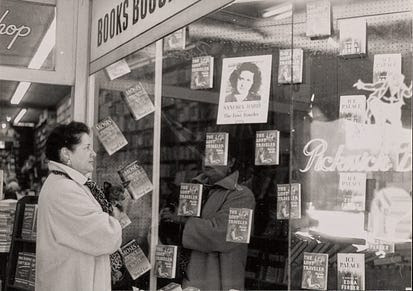Ten Intriguing Facts about Fearless Writer Sanora Babb

Iris Jamahl Dunkle, author of Riding Like the Wind: The Life of Sanora Babb, shares ten intriguing facts about intrepid writer Sanora Babb — peerless author of midcentury American literature and remarkable rebel who challenged the era's social and political norms.
In 1939, when John Steinbeck's The Grapes of Wrath was published, it became an instant bestseller and a prevailing narrative in the nation's collective imagination of the era. But it also stopped the publication of another important novel, silencing a gifted writer who was more intimately connected to the true experiences of Dust Bowl migrants. In Riding Like the Wind, renowned biographer Iris Jamahl Dunkle revives the groundbreaking voice of Sanora Babb.
Dunkle follows Babb from her impoverished childhood in eastern Colorado to California. There, she befriended the era's literati, including Ray Bradbury and Ralph Ellison; entered into an illegal marriage; and was blacklisted by the House Un-American Activities Committee. It was Babb's field notes and oral histories of migrant farmworkers that Steinbeck relied on to write his novel. But this is not merely a saga of literary usurping; on her own merits, Babb's impact was profound. Her life and work feature heavily in Ken Burns's award-winning documentary The Dust Bowl and inspired Kristin Hannah in her bestseller The Four Winds. Riding Like the Wind reminds us with fresh awareness that the stories we know—and who tells them—can change the way we remember history.
Sanora Babb (1907 - 2005)
- Sanora Babb grew up in the Panhandle (Red Rock, Oklahoma; Two Buttes, CO; Elkhart, KS; Forgan, OK; and Garden City, KS). She learned to read from the pages of the Denver Post her mother pasted to the walls of their dugout and by reading from the only book their family owned: Adventures of Kit Carson.
Babb’s first essay she wrote in school was called “How to Handle Men.”

Babb’s grandfather, Konkie in front of their dugout with their harvest of broomcorn. Babb started working in newspapers at a very young age. She got her first job as a reporter for the Garden City Herald in Garden City, KS.

Sanora Babb when she graduated high school in Forgan, OK Babb was the valedictorian of her high school class in Forgan, OK, but didn’t receive the honor. A few parents stopped the principal from giving her the award because her father was a gambler.

Babb and her sister, Dorothy In 1929, she asked her father to flip a coin to decide which city she would move to to become a writer: New York or Los Angeles. Los Angeles won. In L.A., Babb was chosen as a delegate for the first Writers’ Congress in New York City. She, the novelist Harry Carlise, and Tillie Olsen drove cross-country squeezed into a one-seat Ford with a cloth top. She met Richard Wright and hundreds of other like-minded leftist writers in New York.

Babb and Tillie Olsen on their cross-country drive to the first Writers’ Conference in New York City. Babb dated and eventually (when it was legal in California) married the Academy-Award-winning Cinematographer James Wong Howe.

Babb and Howe at the Academy Awards Babb volunteered to work for Tom Collins at the Farm Security Administration. She would work with him for eight months between 1938 and 1939, helping victims of the Dust Bowl. Collins shared her notes with Steinbeck.

Babb with the people she worked with at the FSA camps Her novel was under contract with Random House, and she planned to publish it in the summer of 1939. However, three weeks before John Steinbeck published The Grapes of Wrath, Random House canceled her contract. Her novel Whose Names Are Unknown would not be published until 2004.

Babb and Tom Collins an the FSA Camp Babb was in a writing group with Ray Bradbury for forty years, and they had a caring, supportive friendship.

Babb with her writing group. - Babb published her first novel, The Lost Traveler, in 1958 and her memoir, An Owl on Every Post, in 1970.

